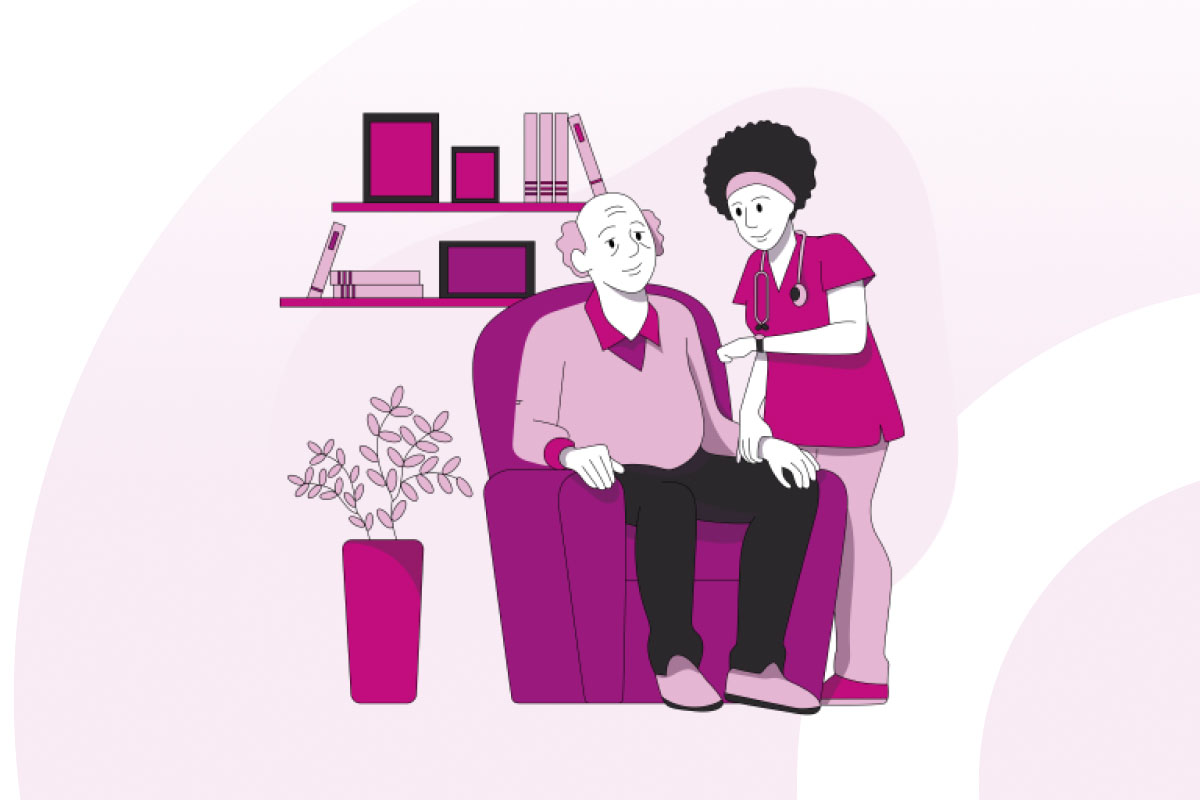The importance of an active and fulfilling life as we age is indisputable, however, various obstacles often hinder this ideal. A recent survey has highlighted the main challenges faced by older people, such aseconomic insecurity, limited access to transport and the difficulties linked to aging at home. As the elderly population continues to grow, it is crucial to rethink services and to design innovative solutions that promote healthy aging. Beyond the challenges, this study also reveals many opportunities to improve the quality of life of seniors, by integrating social and technological approaches adapted to the specific needs of this category of the population.
The aging of the population constitutes a major challenge of the 21st century. A recent investigation made it possible to highlight the main obstacles to healthy aging, while identifying significant opportunities to design benefits adapted to the needs of the elderly. This analysis looks at issues of access to services, economic security and the need for social innovation to improve the quality of life of seniors.
Table des matières
ToggleThe main obstacles to healthy aging
Aging can bring many challenges, both socially and economically. Among the obstacles identified in the survey, three major concerns stand out. First, the aging at home presents challenges in terms of mobility. Limited access to transport and adapted infrastructure complicates the daily life of elderly people, thus reducing their autonomy.
Secondly, theeconomic insecurity approaches the central problem of aging. Many seniors live with limited financial resources, impacting their ability to meet health care costs that increase with age. This economic insecurity can worsen physical and mental health problems, leading to a vicious cycle that is difficult to break.
Finally, social isolation is a critical factor. A survey found that many seniors experience feelings of abandonment, which can have serious impacts on their well-being. The importance of building a support network is therefore essential to ensure healthy aging.
Benefits Design Opportunities
Despite these obstacles, the survey also highlights opportunities to exploit to design benefits adapted to seniors. One of the main perspectives lies in thesocial innovation in terms of services and support. By promoting programs that help older adults maintain their independence, we can transform aging into an enriching and fulfilling experience.
In addition, it is crucial to develop public policies which promote active aging. This would involve not only initiatives aimed at improving access to education and continuing training for seniors, but also incentives to create businesses run and adapted to older people. This would help strengthen their purchasing power and stimulate a strong economy.
Towards collective awareness
Awareness of the challenges of aging is essential to change mentalities. A study of the OECD revealed that the majority of people fear aging, although few actually suffer from dependence. This highlights the importance of a public discourse that values the potential and experience of older people.
Initiatives like exhibitions and conferences can also play a fundamental role in this process. By increasing the opportunities for sharing experiences, it becomes possible to change the way younger generations view aging, creating a more inclusive and respectful world.
It is undeniable that the aging of the population poses many challenges. However, the results of this survey also highlight the opportunities available to us to design appropriate benefits. With an innovative approach and collective commitment, we can transform these challenges into real opportunities for healthy aging.

Aging is a crucial subject today, and a recent survey highlights the major obstacles to healthy aging. These include limited access to transportation, economic insecurity, and challenges related to maintaining an active social life. However, this study also reveals opportunities for designing benefits to help our seniors live independent and fulfilled lives, while promoting active aging.
Barriers to healthy aging
One of the main difficulties encountered by older people is access to transport. Often, the lack of suitable mobility solutions limits their ability to travel for essential activities, whether to run errands or to attend medical appointments. It is essential to develop accessible transport services in order to guarantee their autonomy.
Another crucial obstacle is economic insecurity. Many older adults live on limited income, which affects their quality of life and their ability to access adequate health care. Providing financial assistance and support programs is essential to alleviate their burden and promote healthy aging.
Benefits Design Opportunities
This investigation paves the way for new opportunities in the design of benefits for seniors. Social innovation can play a key role in developing tailor-made programs that meet the specific needs of older people. For example, the creation of remote assistance services could offer continued help at home, while limiting travel.
In addition, promoting awareness initiatives active aging can encourage social interactions and reduce isolation. Many communities can benefit from volunteer programs that strengthen intergenerational connections. These programs not only help mobilize local resources but also contribute to enriching the social lives of seniors.
Concrete solutions to explore
It is also relevant to explore successful cases, such as initiatives in China where private kindergartens are transformed into retirement homes. These innovative examples prove that by redefining the use of spaces, we can create environments adapted to aging.
Finally, it is appropriate to consider the appropriate sizes of the benefit programs. Membership in organizations such as the Consejo National sobre el Vieillissement can facilitate the implementation of several support policies, particularly those relating to health care. For example, a guide to Medicare can be a valuable resource for better understanding the choices available when it comes to health coverage.
In summary, this survey highlights that while aging presents significant challenges, there are also significant opportunities to improve the quality of life of older adults. Together, by optimizing available solutions and developing appropriate programs, we can promote healthy and peaceful aging for everyone.
[Lancement et labellisation de l’Institut Hospitalo-universitaire]
— Jean-Luc Moudenc (@jlmoudenc) April 2, 2024
🏥 À la table ronde sur « L’IHU HealthAge pour une longévité en santé », je suis revenu sur l’importance de cet institut de recherche dédié au vieillissement, pour lequel je me suis battu, dans l'écosystème… pic.twitter.com/bG2YPuDkho
A recent alignment survey highlighted the key barriers seniors face in achieving healthy aging. These challenges include aging in place, access to transportation, and economic insecurity. However, this study is not limited to identifying existing problems; it also offers promising avenues for designing policies and programs favorable to the well-being of older people. In this article, we will explore these obstacles as well as the resulting opportunities for a future more responsive to the needs of seniors.
Understanding the barriers to healthy aging
Aging in place is one of the first challenges. While many older people want to stay at home as long as possible, current infrastructure is often not suitable. This can lead to feelings of isolation and worsening physical and mental health.
Access to transport
Then, access to transport turns out to be a major issue. Many seniors have difficulty getting around, whether due to lack of financial means or the absence of suitable services. In practical terms, this limits their ability to participate in essential social activities and receive medical care. Municipalities must therefore consider inclusive transport solutions, making it easier for older people to travel.
Economic insecurity
Economic insecurity is another significant barrier. With the cost of living constantly increasing, many retirees live in fear of running out of resources. To remedy this, it is imperative to develop financial support policies to guarantee a better quality of life for older people. Implementing grant programs and low-interest loans can be an effective solution.
Benefits Design Opportunities
In the face of these obstacles, the survey also reveals many opportunities for benefit design that can transform the aging landscape. By rethinking public policies, we can move towards active rather than passive aging.
Creating accessible programs
It is essential to create accessible programs adapted to the needs of seniors. This could include leisure and learning initiatives, encouraging socialization. In addition, the development of digital tools to facilitate communication and access to information can greatly improve the daily lives of older people.
Social innovation
Social innovation presents itself as a possible solution. By encouraging companies to develop products and services for seniors, we contribute to a more inclusive economy. Startups that focus on aging can revolutionize approaches to healthcare, integrating technology to improve quality of life, such as apps for health management or smart home security devices.
At the dawn of an aging population, it is crucial to act by aligning public policies and private initiatives with the real needs of older people. By overcoming the obstacles identified by the survey, we can promote healthy, sustainable and fulfilling aging for all.








